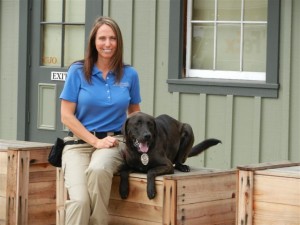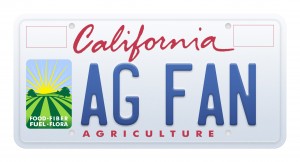Putting farmers onto underused land was once a matter of creating homesteads.
Now it has entered the computer age, with nonprofits using the Internet to match farmland with growers.
The need, advocates say, comes in part from an aging farm population.
California farmers age 65 or older outnumber farmers under 35 by 9 to 1, said Liya Schwartzman, Central Valley coordinator for California FarmLink, one of those nonprofit groups.
“In many cases, their children don’t want to go into farming,” she said. “We need more beginning farmers right now.”
At the same time, many landowners are hoping to preserve the land for agriculture, not development, and want to help younger farmers – not large agribusiness.
It led to a dating service of sorts for farms.
“We’re kind of a Match.com, a little bit,” Schwartzman said.
FarmLink has online listings of about 80 land opportunities in the Central Valley and connections to around 800 would-be farmers.
Land opportunities can be as small as a half-acre or as big as 800 acres.
There is an urban parcel in West Sacramento that the owner wanted productive, and orchard acreage in Apple Hill looking for someone new to take it over.
One of the successful linkages produced an operation known as the Cloverleaf at Bridgeway Farms, at the Kidwell Road exit off Interstate 80 west of Davis.
When Bridgeway’s longtime owner Rich Collins wanted to start farming 30 years ago, finding land to start his endive specialty operation was tough.
“When I started, there was no Web,” Collins said. “You were literally out there driving around.”
Eventually, he found five acres that were part of another farmer’s 4,000-acre operation.
A couple of years ago, when Collins had 16 acres he wanted to put in the hands of a new farmer – a way of paying things forward, he said – he turned to FarmLink and its database.
FarmLink connected him with Emma Torbert, 32, who had interned and apprenticed on farms in the East, and works at UC Davis’ Agriculture Sustainability Institute.
She wanted to farm, but had no land.
“It was through FarmLink that I saw his land and then I contacted him,” Torbert said.
She was taken by Collins’ vision of Bridgeway Farms becoming a place where travelers on the interstate could stop to see how a working farm operates, with a dairy, winery, chickens and more.
Collins, in turn, was taken by Torbert and her farming partner Sasha Klein.
“I appreciate young folk who are willing to work,” Collins said.
FarmLink helped them craft a lease agreement – $1 for the first year. That’s how the Cloverleaf began.
The two farmers just broke even last year, their first, because of expenses bringing irrigation to the parcel.
This year, they are taking over four acres of orchard from Collins and adding two more partners.
The orchard will hold a pruning workshop Sunday. See www.thecloverleaffarm. com for more information.
“It’s somewhat of a time-honored tradition in agriculture,” Collins said of his help for the young farmers.
If FarmLink is like Match.com, the Land Bank of Living Lands Agrarian Network is more like Craigslist.
The Network, based in Nevada County, has nine parcels it manages with a network of young growers, taking on interns to train new farmers.
As the word spread, however, they found more people who had small amounts of land they wanted farmed.
“We, as Living Lands, were approached by so many landowners, we didn’t have the resources,” said Rachel Berry, the group’s director.
They established the online Land Bank late in 2011.
Now, the website, landbank.livinglandsagrariannetwork.org, has 10 listed sites from Nevada County to Orangevale.
While FarmLink provides connections, lease models, advice and even some farm loans, those who use the Land Bank can make their own arrangements, Berry said. “Typically, there’s very little money exchanged,” Berry said.
Like Brian Ekiss, who lives on 5.5 acres outside Nevada City. He just wanted someone to use some of his acreage.
“We went to the farmer’s market and we just had this light bulb go off,” Ekiss said.
They contacted Living Lands and offered the space in a handshake deal, not expecting money.
“We’re not getting paid; we have some picking rights,” said Ekiss. “We’re sort of compensated by being part of the network.”
© Copyright The Sacramento Bee. All rights reserved.
Call The Bee’s Carlos Alcalá, (916) 321-1987.




